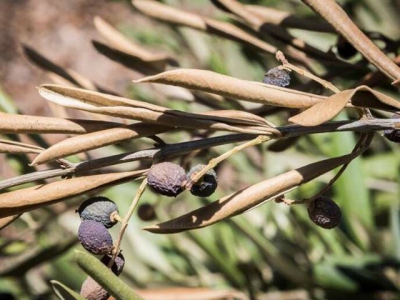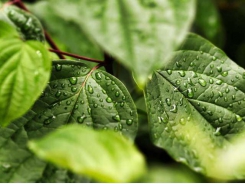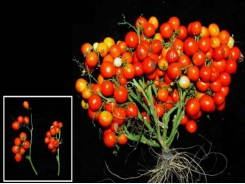How to save olives from destructive diseases

Plant pathogens, or disease-causing viruses, bacteria and fungi could lead to significant losses in agricultural yields, and threaten food security and ecosystem integrity. Between 2012 and 2017, the bacterium Xylella fastidiosa (Xf) severely damaged large orchards covering 538 km2, equivalent to about 6.5 million olive trees in Apulia, southern Italy, according to data by the European Commission's Joint Research Centre (JRC).
At the 2nd European conference on Xf organised jointly by the European Food Safety Authority (EFSA) and several partners of the EU-funded POnTE project, Dr. Pieter Beck of the JRC said the information was collected using Sentinel-2 satellite data and was supported by weather data.
His presentation is shown in a video. Quoted in a news item in "Eurasia Review' covering the conference, Dr. Beck explained that employing satellite data in such a manner "can help assess the extent of the damage Xylella is causing" as well as "inform the decisions for adaptation in areas where it is established."
According to a news release by EFSA, 350 plant health specialists from around the world attended the conference that focused on ways in which "science can help find solutions to the plant pest that is causing environmental and economic damage across Europe." Major results and challenges of the POnTE project were also presented at the event.
Project researchers have been examining various aspects of the Xf and its vectors in olive, grapevine, citrus, stone fruit, ornamentals and landscape trees. "Symptoms of a Xylella fastidiosa infection include weakened branches, dried leaves and hardened, shrunken fruits. Infected trees effectively experience an internal drought," as noted in a factsheet by the UN's Food and Agriculture Organization (FAO).
Spreading to other regions
Normally found in the Americas, the bacterium was first detected in Italy in 2013 and started spreading rapidly across southern Europe, affecting both Spain and France. The FAO factsheet also notes that the pathogen, which has no known cure, threatens to spread further to the Near East and North Africa region. Prevention and early detection are seen as vital for mitigating the potential threat of Xf. Quoted in "Eurasia Review," Sybren Vos from EFSA said: "Remote sensing technologies can contribute to the early detection of Xylella through the detection of pre-visual symptoms on the host plants."
The POnTE (Pest Organisms Threatening Europe) project, which ended in October 2019, focused on supporting the prevention, early detection, control and management of a group of pests threatening EU agriculture and forestry. In addition to Xf, POnTE covered Candidatus Liberibacter solanacearum and its vectors affecting a number of strategic crops such as the potato, tomato and carrot. It also dealt with Hymenoscyphus fraxineus and emerging species of Phytophthora affecting broadleaf and conifer species in forest ecosystems.
Related news
Tools

Phối trộn thức ăn chăn nuôi

Pha dung dịch thủy canh

Định mức cho tôm ăn

Phối trộn phân bón NPK

Xác định tỷ lệ tôm sống

Chuyển đổi đơn vị phân bón

Xác định công suất sục khí

Chuyển đổi đơn vị tôm

Tính diện tích nhà kính

Tính thể tích ao




 Beet cyst eelworm - the chemical option
Beet cyst eelworm - the chemical option  This wild plant could be the next strawberry
This wild plant could be the next strawberry